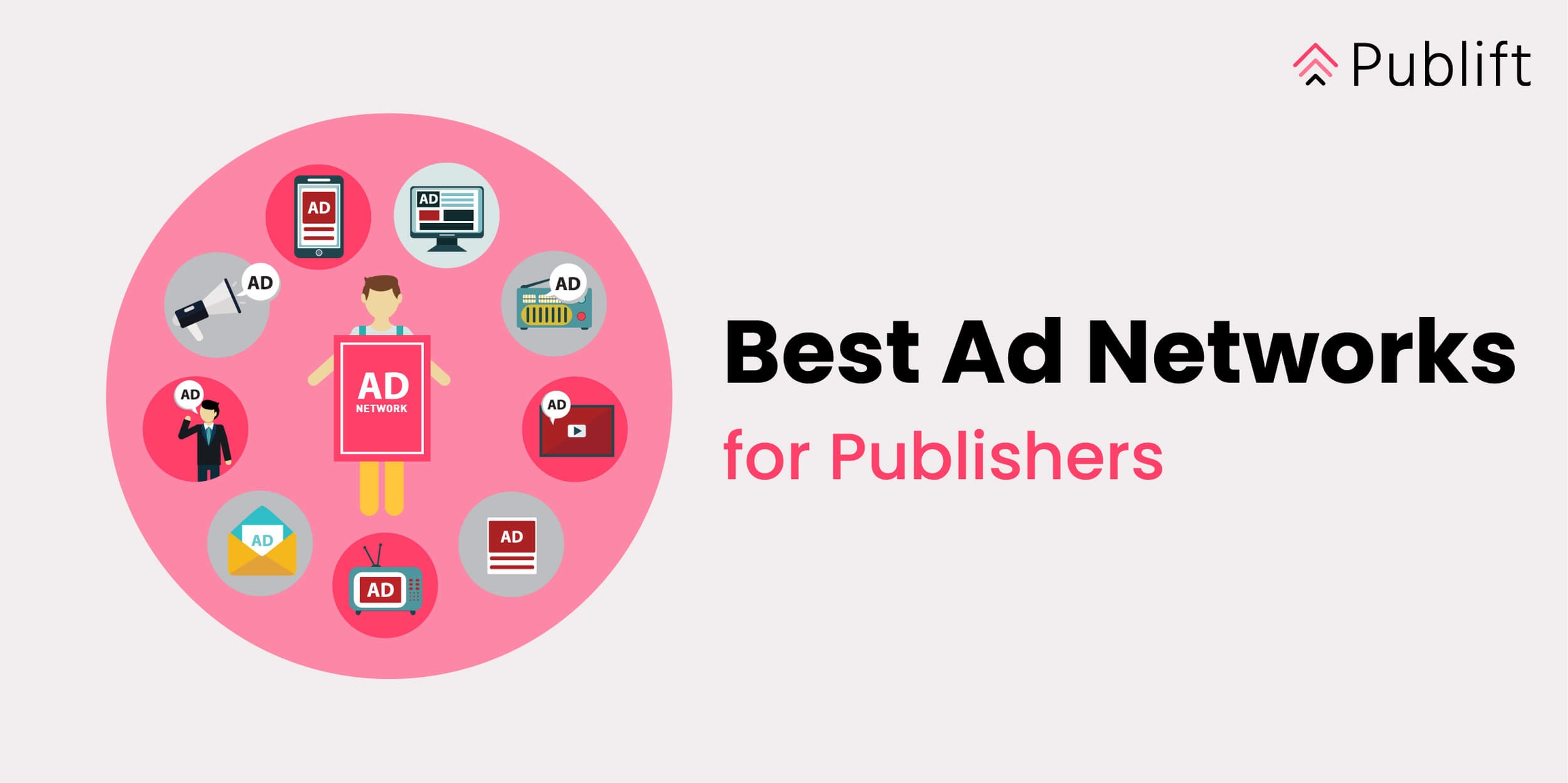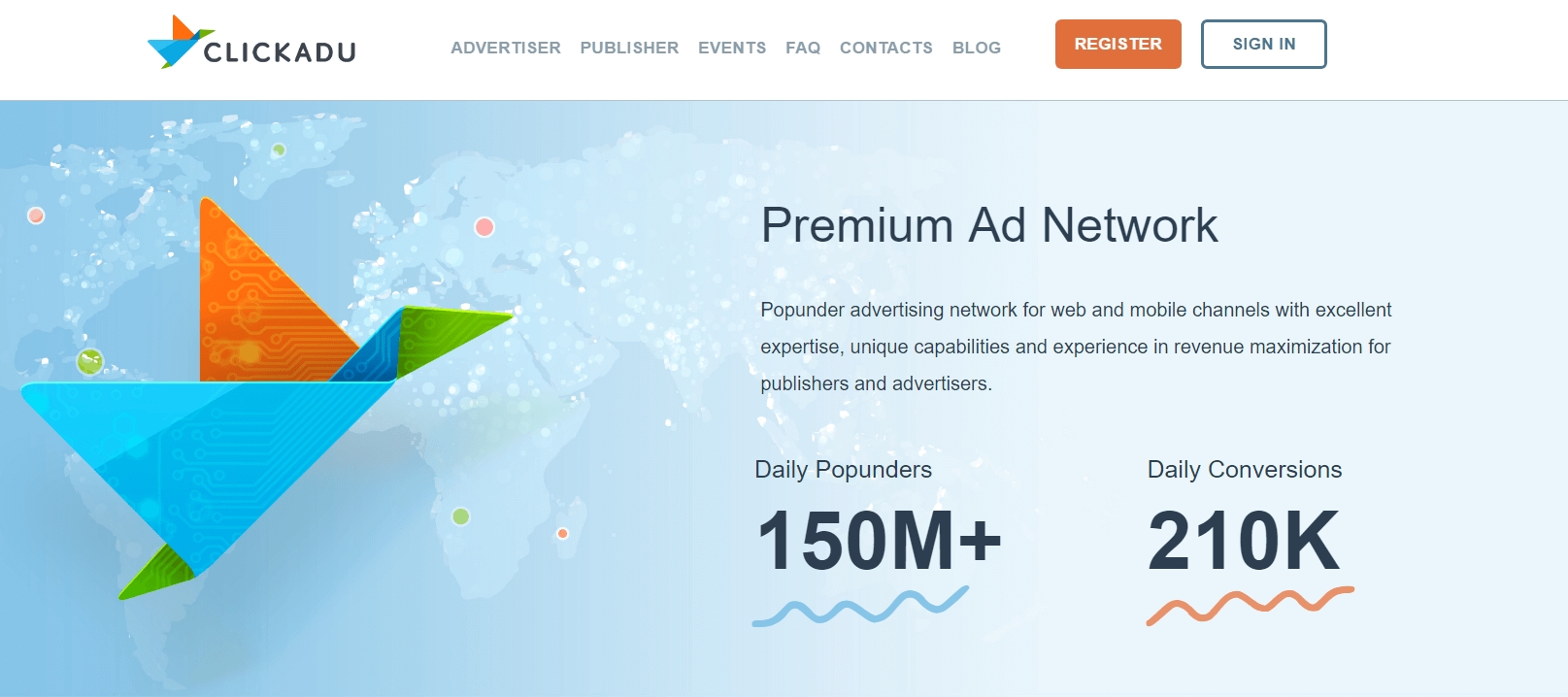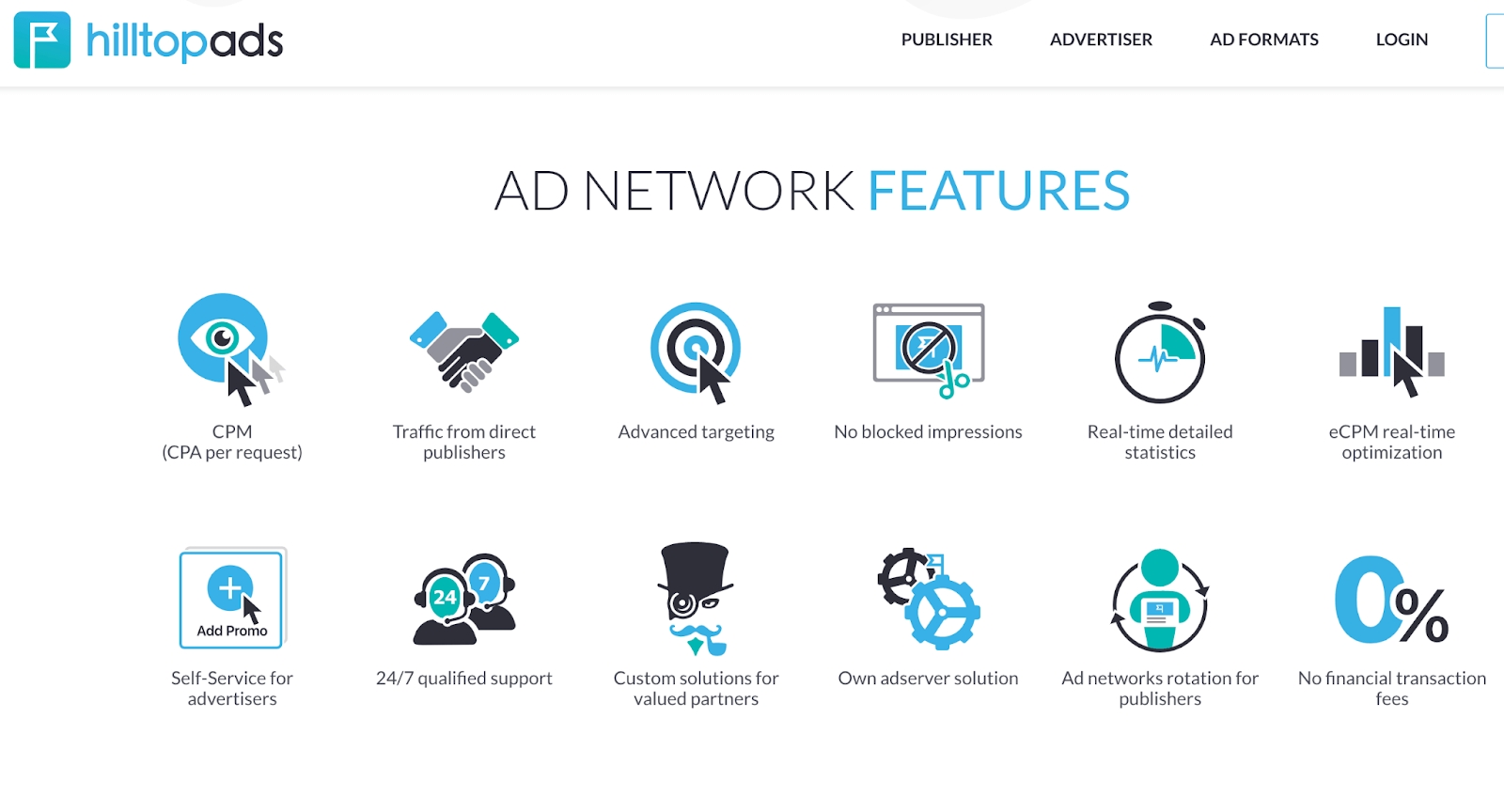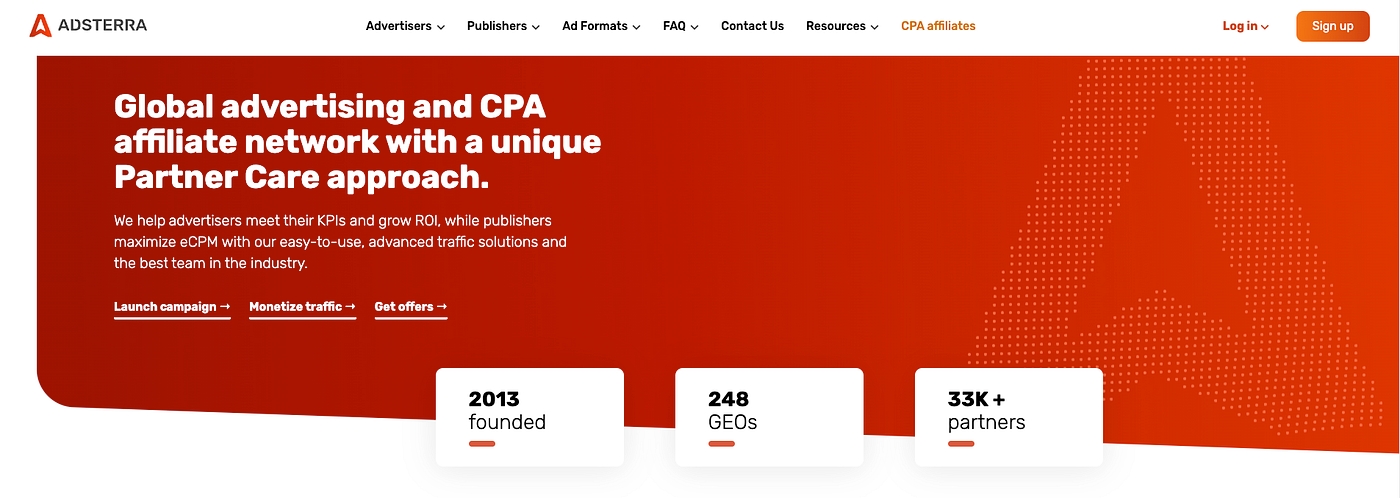A comprehensive guide for publishers on how to optimize revenue using pop ad networks
Buy CPC Traffic | Buy Display Ads | Exclusive traffic sources | Buy Push Ads | Popunder ADS | Buy Native Ads | Buy Preroll Ads

Buy CPC Traffic | Buy Display Ads | Exclusive traffic sources | Buy Push Ads | Popunder ADS | Buy Native Ads | Buy Preroll Ads
As a publisher, finding the right ad network is crucial to maximizing revenue and ensuring the success of your website or app. One popular option that many publishers turn to is pop ad networks. These networks specialize in delivering pop-up and pop-under ads, which can be highly effective in capturing users' attention and generating revenue.
Pop ad networks work by displaying ads in a new browser window or tab, either on top of or behind the user's current content. This can be a highly effective way to monetize your website or app, as it allows you to reach a large audience and generate revenue from each ad impression. However, it's important to choose the right ad network to ensure that you're getting the best results.
When selecting a pop ad network, there are several factors to consider. First and foremost, you want to choose a network that has high-quality ads and a wide variety of advertisers. This will help ensure that the ads displayed on your site or app are relevant to your audience and provide a positive user experience. Additionally, you'll want to look for a network that offers competitive rates and reliable payment terms, as this will have a direct impact on your revenue.
Exploring Different Pop Ad Networks
When it comes to maximizing revenue with pop ad networks, it's important to explore different options available in the market. There are several pop ad networks that can help publishers increase their earnings. Let's take a look at some popular ones:
1. PopAds
PopAds is one of the leading pop ad networks that offers impressive rates and fast payments. They provide a wide range of targeting options, including GEO targeting, IP targeting, and device targeting. PopAds works with various verticals and accepts publishers from around the world.
2. PropellerAds
PropellerAds is another popular pop ad network that offers high-quality traffic and timely payouts. They provide a user-friendly platform with advanced targeting options, such as browser targeting, device targeting, and operating system targeting. PropellerAds also offers an anti-adblock solution to maximize revenue.
3. PopCash
PopCash is a trusted pop ad network that provides competitive rates and daily payments. They offer various ad formats, including pop-under ads, tab-up ads, and tab-under ads. PopCash allows publishers to set their own minimum bid and provides detailed statistics to track performance.
Overall, exploring different pop ad networks is crucial for publishers looking to maximize their revenue. Each network has its own strengths and features, so it's important to test and analyze their performance to find the best fit for your website.
Understanding Pop Ad Network Models
As a publisher looking to maximize revenue with pop ad networks, it's important to understand the different models these networks operate on. Each model offers unique advantages and disadvantages, and understanding them can help you make informed decisions about which ad network to work with.
1. Cost per Mille (CPM)
CPM is a popular pricing model used by many pop ad networks. In this model, publishers are paid a certain amount for every thousand impressions their ads receive. The CPM rate is typically determined by factors such as the quality of the traffic and the targeting options available.
The CPM model is attractive for publishers because it offers a predictable revenue stream based on the number of impressions their ads generate. However, it's important to note that CPM rates can vary significantly depending on factors such as the geographic location of the traffic and the niche of the website.
2. Cost per Click (CPC)
Another common model used by pop ad networks is cost per click (CPC). In this model, publishers earn money each time a user clicks on one of their ads. The amount earned per click is determined by factors such as the competitiveness of the ad space and the quality of the traffic.
CPC can be a profitable model for publishers if they are able to drive high-quality traffic to their website. It requires a strong understanding of audience targeting and optimization strategies to maximize the number of clicks and, consequently, the revenue generated.
3. Revenue Sharing

Some pop ad networks offer revenue sharing models, where the revenue generated by the ads is split between the publisher and the network. This model is typically used by larger ad networks with a significant user base, as it allows them to attract publishers by offering a share of the revenue.
Revenue sharing models can be beneficial for publishers as they offer the opportunity to earn a percentage of the ad revenue generated. However, it's important to carefully consider the revenue split offered by the network and consider whether it aligns with your revenue goals.
When choosing a pop ad network, it's important to consider these different models and evaluate which one aligns best with your website's traffic and revenue goals. It's also worth considering whether the ad network offers any additional features or targeting options that can help you optimize your revenue potential.
Optimizing Pop Ad Placements for Higher Revenue
Pop ad networks can be a highly effective way for publishers to generate revenue, but optimizing the placement of these ads is crucial for maximizing returns. By strategically placing pop ads on your website, you can increase visibility and engagement, leading to higher conversions and revenue. Here are some tips to help you optimize your pop ad placements:
1. Target High-Traffic Pages
Identify the pages on your website that receive the most traffic and place pop ads strategically on these pages. This will ensure that your ads are seen by a larger audience, increasing the chances of engagement and conversions. For example, if you run a website that focuses on adult content, you can buy adult traffic to attract more visitors to these high-traffic pages.
2. Test Different Placements
Experiment with different ad placements to find the ones that yield the highest revenue. Consider placing pop ads at the top of the page, within the content, or as exit overlays. Test each placement option for a specific duration and analyze the results to determine which performs the best in terms of generating revenue.
Note: It's important to strike a balance between maximizing revenue and providing a good user experience. Users should be able to easily close or navigate away from pop ads if they choose not to engage with them.
3. Consider User Behavior
Take into account your users' behavior when optimizing pop ad placements. Analyze metrics such as scroll depth, mouse movement, and click patterns to gain insights into where users are most engaged. By placing pop ads in these high-engagement areas, you can increase the likelihood of conversions and revenue generation.
Remember: Continuously monitor and analyze the performance of your pop ad placements to ensure they are consistently delivering the desired results. Adjustments may need to be made periodically to optimize revenue and user experience.
By implementing these optimization strategies, you can effectively maximize revenue with pop ad networks and create a win-win situation for both publishers and advertisers.
Implementing Effective Targeting Strategies
Targeting strategies are crucial for maximizing revenue with pop ad networks. By reaching the right audience at the right time, publishers can increase the chances of capturing the attention of potential customers and generating higher click-through rates.
1. Audience Segmentation
Segmenting your audience is an effective way to target specific groups of users with relevant ads. By analyzing user demographics, interests, and behavior, publishers can categorize their audience into different segments. This allows for the delivery of targeted ads that are more likely to resonate with the specific needs and preferences of each segment.
Platforms like Google Analytics provide valuable insights into audience segmentation. By understanding which demographics and interests are most relevant to your content, you can tailor your targeting strategies accordingly.
2. Geo-Targeting
Geo-targeting is the practice of delivering ads based on a user's geographical location. This strategy is highly effective as it allows publishers to target specific geographic regions, cities, or even zip codes. By tailoring ads to a particular location, publishers can increase relevancy and engagement.
For example, if you operate a local business, you can use geo-targeting to reach users in your specific area. This ensures that your ads are seen by potential customers who are more likely to convert into actual sales.
3. Contextual Targeting
Contextual targeting involves delivering ads that are relevant to the content of a webpage or app. Publishers can choose specific keywords or topics that are related to their content and match them with relevant ads. This targeting strategy ensures that ads are shown to users who are already interested in the topic being discussed.
For instance, if your website focuses on health and wellness, contextual targeting can display ads related to fitness equipment or healthy living products. This increases the likelihood of users engaging with the ad and potentially making a purchase.
Overall, implementing effective targeting strategies is essential for publishers looking to maximize revenue with pop ad networks. By segmenting the audience, leveraging geo-targeting, and utilizing contextual targeting, publishers can optimize their ad campaigns and increase their chances of generating higher revenue.
Tracking and Analyzing Pop Ad Performance
Tracking and analyzing the performance of pop ads is essential for publishers to maximize their revenue. By closely monitoring the success of their ad campaigns, publishers can make informed decisions and optimize their strategies for better results.
1. Choosing the Right Tracking Tools

There are various tracking tools available, ranging from basic analytics platforms to advanced ad tracking software. Publishers should consider their specific needs and budget when selecting a tracking tool. Some popular options include Google Analytics, ClickMeter, and Voluum.
2. Key Metrics to Track
When analyzing pop ad performance, there are several key metrics that publishers should pay attention to:
Impressions: The number of times an ad is displayed to users.
Clicks: The number of times users click on an ad.
Click-through rate (CTR): The percentage of impressions that result in clicks.
Conversion rate: The percentage of clicks that result in a desired action, such as a purchase or sign-up.
Revenue: The total earnings generated from the ads.
3. A/B Testing
A/B testing is a valuable technique for optimizing pop ad performance. By testing different ad creatives, landing pages, or targeting parameters, publishers can identify the most effective combinations for maximizing revenue. It's important to track the performance of each variation and make data-driven decisions based on the results.
4. Monitoring Ad Placement and Frequency

The placement and frequency of pop ads can greatly impact their performance. Publishers should monitor the ad placement on their website and analyze how different positions and frequency affect user engagement and revenue. Adjustments can be made to optimize the ad placement and frequency based on the tracked data.
5. Analyzing User Behavior
Understanding user behavior is crucial for improving pop ad performance. Publishers can analyze metrics such as bounce rate, time on site, and page views to gain insights into how users interact with their website and ads. This information can help identify potential areas for improvement and optimize the overall user experience.
By tracking and analyzing the performance of pop ads, publishers can make data-driven decisions to optimize their strategies and maximize revenue. It's important to regularly review and analyze the data to stay updated on trends and make necessary adjustments to stay ahead in the competitive advertising landscape.
Maximizing Revenue with Split Testing

In order to maximize revenue with pop ad networks, it is important for publishers to continuously experiment and optimize their ad placements. One powerful technique for doing this is split testing.
Split testing, also known as A/B testing, involves comparing two versions of a web page to see which one performs better. It allows publishers to test different ad placements, ad formats, and even different ad networks to determine which combination generates the highest revenue.
Step 1: Setting up Split Tests

The first step in maximizing revenue with split testing is to set up the tests correctly. Publishers can use various tools and platforms to configure and monitor their split tests.
For example, publishers can use tools like Google Optimize or Optimizely to easily set up split tests on their websites. These tools allow publishers to create alternative versions of their web pages and automatically split traffic between the different versions.
Step 2: Testing Different Ad Placements

Once the split tests are set up, publishers can start testing different ad placements. This could involve placing ads in different locations on the web page, such as above the fold, below the fold, or within the content.
Publishers can also experiment with different ad formats, such as banner ads, interstitials, or pop-ups. By testing different placements and formats, publishers can identify the combination that generates the highest revenue.
Step 3: Testing Different Ad Networks
In addition to testing different ad placements, publishers can also use split testing to try out different ad networks. Publishers can partner with multiple ad networks, like Trafficstars, buy display ads, and split traffic between them to see which one generates the most revenue.
By using split testing, publishers can optimize their ad revenue and make data-driven decisions about their ad inventory. It allows publishers to continuously improve their ad placements and configurations, ensuring they are maximizing their revenue potential.
In conclusion, split testing is a valuable technique for publishers looking to maximize revenue with pop ad networks. By accurately setting up split tests and testing different ad placements and networks, publishers can identify the combination that generates the highest revenue.
What are pop ad networks?
Pop ad networks are advertising platforms that deliver pop-up or pop-under ads to website visitors. These ads often appear in separate windows or tabs and can be effective in generating revenue for publishers.
How do pop ad networks maximize revenue for publishers?
Pop ad networks can maximize revenue for publishers by providing them with access to a large pool of advertisers and optimizing the delivery of ads based on factors such as user behavior and demographics. They also typically offer competitive rates and flexible payment options.
Are pop ad networks suitable for all types of websites?
Pop ad networks may not be suitable for all types of websites. Some visitors might find pop-up or pop-under ads intrusive, which can negatively impact user experience. It's important for publishers to consider their audience and the nature of their website before implementing pop ad networks.
What are some popular pop ad networks?
Some popular pop ad networks include PopAds, PropellerAds, PopCash, and Adsterra. These networks have a large pool of advertisers and offer competitive rates for publishers.
What are some tips for maximizing revenue with pop ad networks?
Some tips for maximizing revenue with pop ad networks include optimizing ad placement, testing different ad formats and designs, analyzing performance metrics, and considering user feedback. It's also important to monitor and adjust the frequency of pop-up ads to find the right balance between revenue generation and user experience.
Is it possible to maximize revenue with pop ad networks?
Yes, it is possible to maximize revenue with pop ad networks by following certain strategies and best practices.
What are some strategies for maximizing revenue with pop ad networks?
Some strategies for maximizing revenue with pop ad networks include optimizing ad placements, targeting the right audience, testing different ad formats, and continuously monitoring and optimizing performance.
Buy CPC Traffic | Buy Display Ads | Exclusive traffic sources | Buy Push Ads | Popunder ADS | Buy Native Ads | Buy Preroll Ads
2022-2024 @ Maximizing Revenue with Pop Ad Networks: A Guide for Publishers